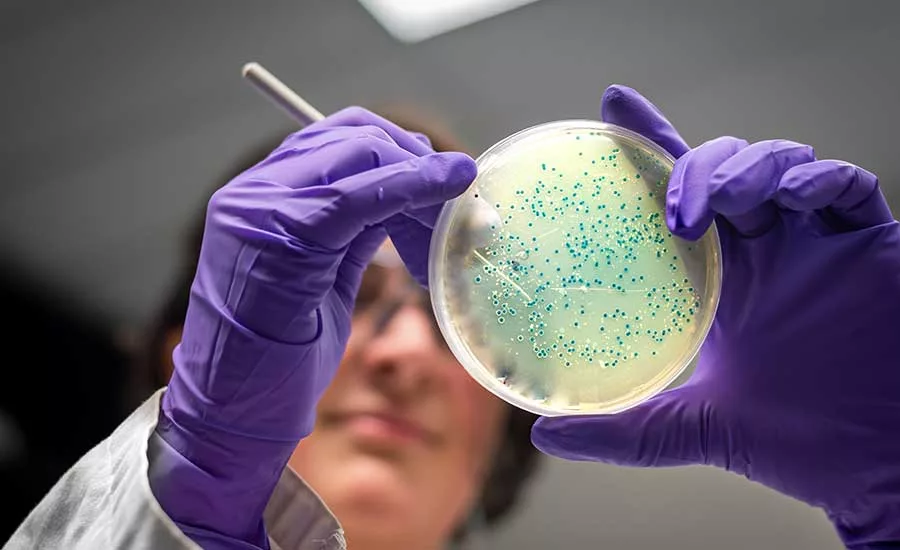Study Highlights Importance of Addressing Biofilm-Forming Pathogens to Control Listeria in Food Processing Facilities

Image credit: Manjurul/iStock/Getty Images Plus via Getty Images
Supported by the U.S. Department of Agriculture (USDA), a recent study from Penn State University researchers has demonstrated the protection that multispecies biofilms provide to Listeria monocytogenes against sanitizers. The findings could inform more effective sanitation procedures in food processing environments.
Specifically, the researchers sought to determine the effect of selected environmental microbiota on biofilm formation and tolerance of L. monocytogenes to the sanitizer benzalkonium chloride in formed biofilms. The studied microbiota included bacterial families previously shown to co-occur with L. monocytogenes in tree fruit packing facilities, including Pseudomonadaceae, Xanthomonadaceae, Microbacteriaceae, and Flavobacteriaceae.
The results showed that Pseudomonadaceae and Xanthomonadaceae were especially adept at forming biofilms that protect L. monocytogenes.
Based on their findings, the researchers suggest that L. monocytogenes control strategies should focus not only on assessing the efficacy of sanitizers against L. monocytogenes, but also against biofilm-forming microorganisms that reside in the food processing facility. The researchers underline the need to assess the efficacy of commonly used sanitizers against non-pathogenic, biofilm-forming microorganisms commonly found in food processing environments to prevent biofilms from establishing in the first place.
Future research could help inform tree fruit industry guidance on sanitizer application times and concentrations that are most effective against L. monocytogenes in protective biofilms. Penn State Extension will communicate the findings of the present study to professional organizations dedicated to sanitation in food processing facilities.
Looking for quick answers on food safety topics?
Try Ask FSM, our new smart AI search tool.
Ask FSM →









